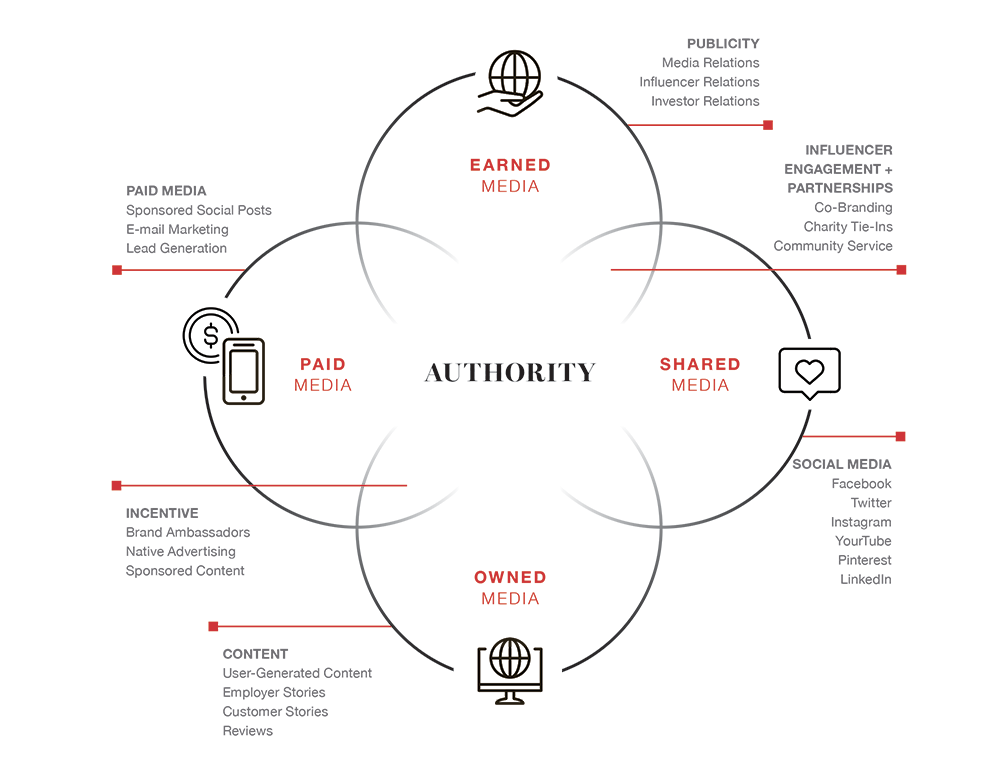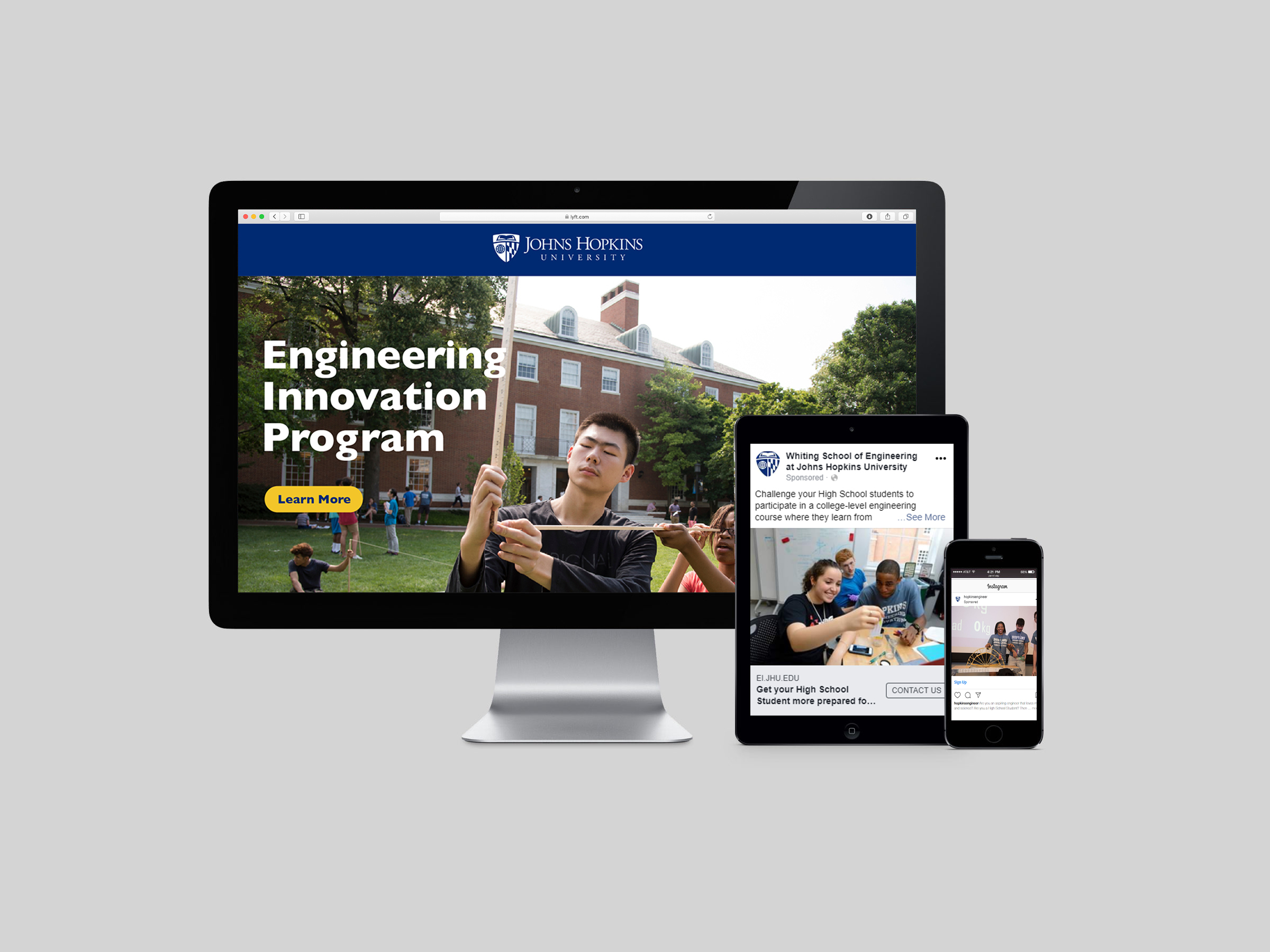What Is an Integrated Marketing Strategy and Why Do I Need One?
Topics: Marketing Toolkit, Public Relations, Millennials + Gen Z, Digital Media, Higher Ed Marketing, Media + Advertising
Posted by: MarketingSo far our “planning an effective modern marketing campaign” series has explored the preparatory work necessary for creating a potent marketing campaign. Our posts on developing a buyer persona for your target audience and setting marketing campaign goals cover the first pass of the DISCOVER stage. Today we delve into the CREATE stage of campaign planning as we discuss how and why to identify the right mix of paid advertising (both digital and traditional) and earned, owned, and shared media for a successful integrated marketing strategy.

An integrated marketing strategy incorporates traditional media and advertising, digital marketing tactics, and public relations (PR). By combining tactics from these three marketing arenas, you can extend your reach while each part of your marketing campaign amplifies the efforts of the others.
This type of holistic plan blends appropriate combinations of traditional out-of-home and print advertising, display, video, search, social, earned media, influencer marketing and promotional events to produce the outcomes you're looking for. To maximize effectiveness and keep costs in line, you will want to include the right mix of paid, earned, owned, and shared media. And in this increasingly virtual era, digital marketing tactics are especially important.
Digital marketing solutions are vital for modern marketing success.
According to YPulse, in 2020, Millennials & Gen Z had a combined spending power of almost $3 trillion. These digitally native demographics are a growing consumer powerhouse which most businesses must reach in order to succeed. To advertise to and connect with these younger generations, it is imperative that you include a digital advertising strategy in your marketing plans.
+ Learn more about how to engage Millennials and Gen Z when advertising.
In addition, older demographics are also spending an increasing amount of time on smartphones, social media platforms, and the internet in general.
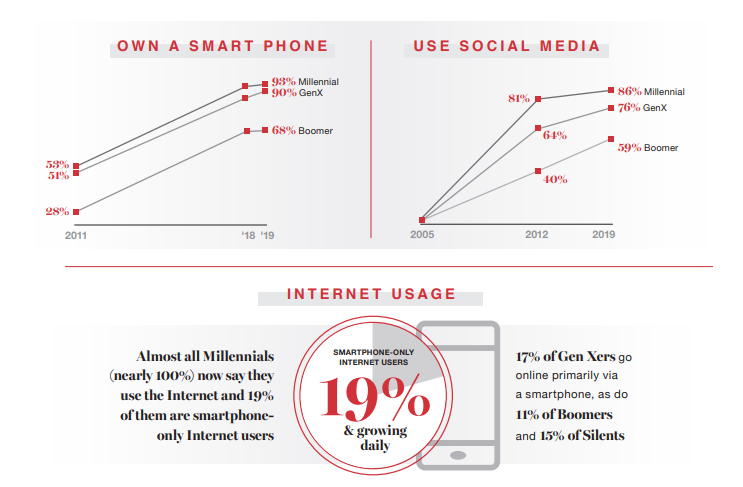
The umbrella term “digital marketing” encompasses an enormous range of tactics and new media assets. Everything from paid digital advertising to your website and social media channels falls under this category. Through these means you can amplify your branding efforts, extend your marketing reach and build deeper relationships with your target audience.
The world of digital marketing can be overwhelming. Marketing managers may be tempted to focus the majority of their time, efforts and budget elsewhere. However, this ever-expanding sector is key to attracting consumer attention in our increasingly virtual world. Including a digital component truly is one of modern marketing’s best practices. But where should you focus your digital marketing activity?
Choosing Digital Marketing Channels
It’s important to choose the digital marketing channels that best fit your needs and are proven to deliver real results. For most companies looking to increase reach, engagement, and sales in today’s market, paid ad campaigns are an excellent way to optimize ROI. Using location specific geo-targeted advertisements (local Pay Per Click) ensures that the impressions you’re paying for reach the candidates you’re pursuing.

Today’s best digital advertising channels include Google (for search, display, and video), Bing (for search and display), social media campaigns (Facebook, Instagram, LinkedIn, Twitter), and emerging media. When it comes to social media, each platform serves a distinct purpose and your company needs to know how to properly utilize each of the platforms you employ.
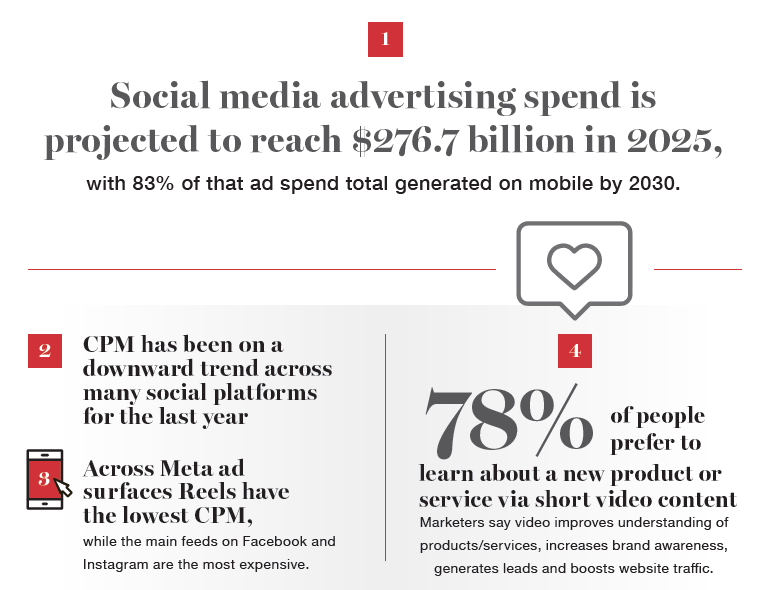
Mobile Marketing
Increasingly, retail visits and purchases, video viewing, and internet usage are happening on mobile devices rather than PCs or laptops. In fact, 96% of adults in the United States ages 18 to 29 now own smartphones. Online, email and text marketing reach most audiences exactly where they’re spending the majority of their time – on their mobile devides. This makes it especially important that companies know how to optimize their campaigns for a mobile setting and make the mobile shopping experience as easy and seamless as possible.
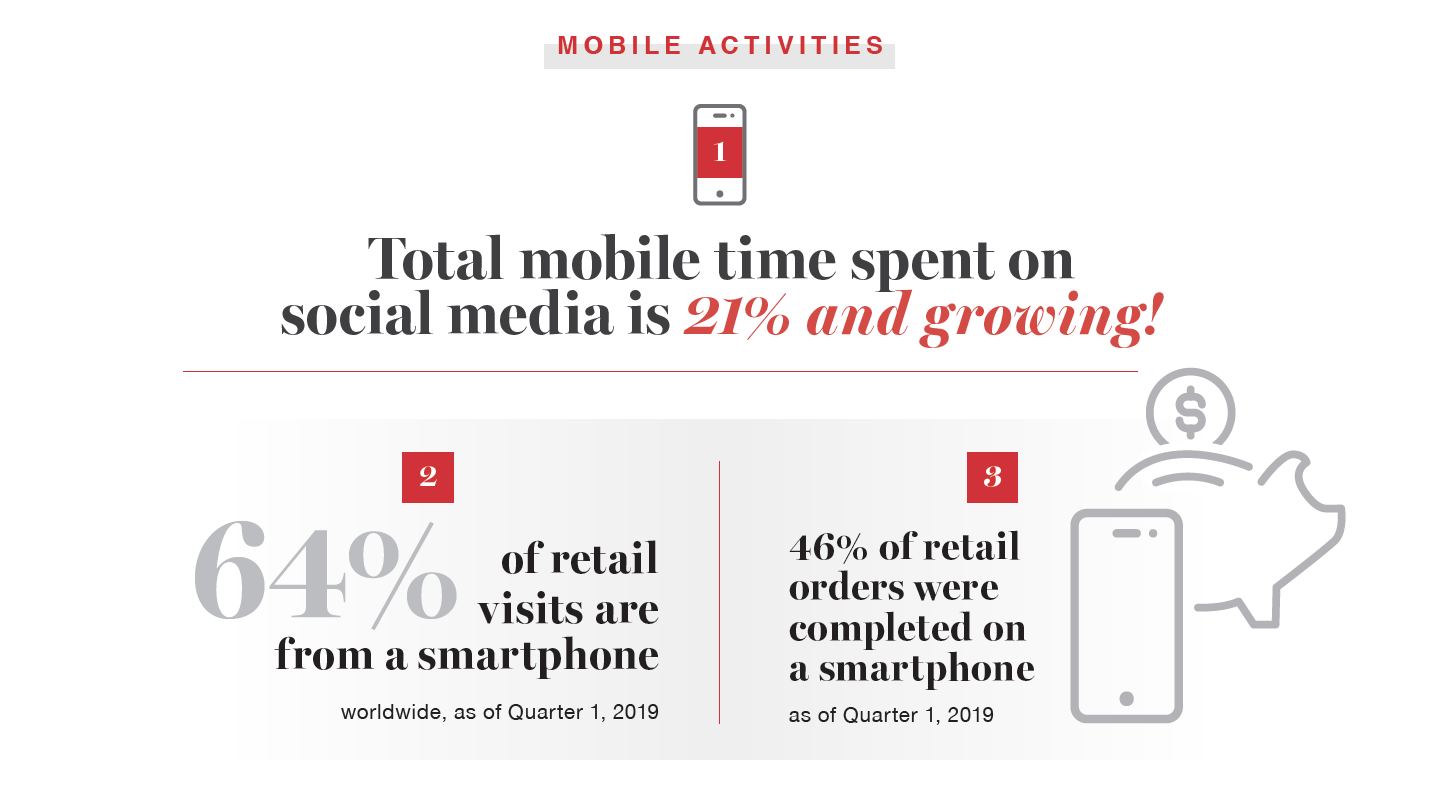
Video Marketing
Videos are another key marketing tool, and are rapidly growing in popularity. With compelling video creation and promotion, your marketing message can be effectively conveyed to a wide audience more quickly than ever before.
- Virtual tours entice viewers to visit in person.
- Product/program features and benefits videos engage consumers more effectively than the written word.
- Well-produced and informative videos convey volumes about your firm’s identity.
- Online videos are easily shared via social media.
Four times as many people would prefer to watch a product or informational video than read about it, so using videos in your marketing campaign is probably one of the easiest ways to capture consumers. And if your target market consists of teens or young adults, video is the format most likely to engage their attention and propel them to action.
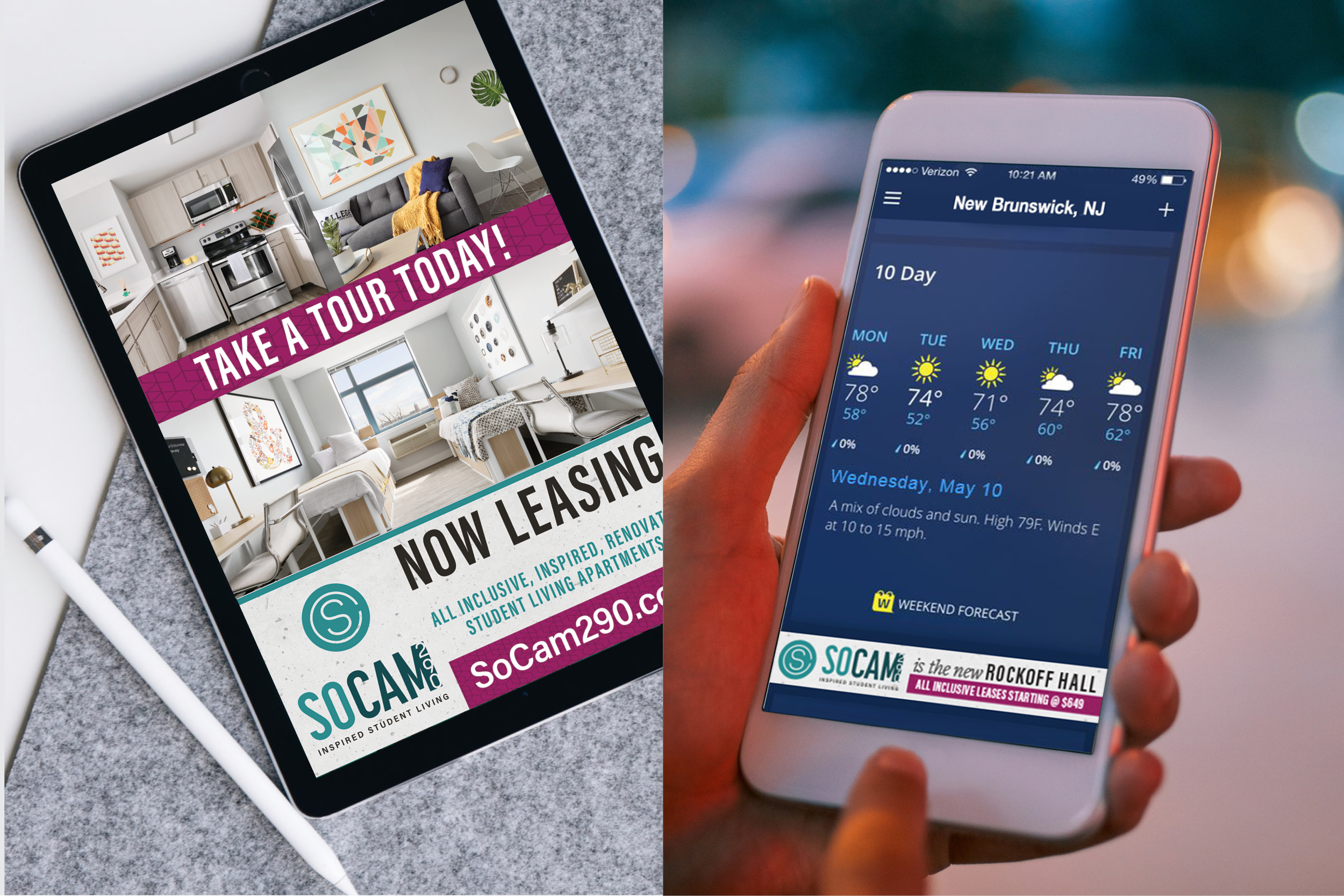
+ See our digital marketing campaign client showcases.
Traditional media and advertising also play an important role.
Targeting your advertising efforts geographically is a smart move. For businesses trying to engage younger demographics, college campuses concentrate your intended audience in a small area as students live, eat, socialize and learn within a few square miles. Build your brand voice and capture revenue through strategically placed outdoor and transit advertising, print advertisements, chalk art and graffiti.
Outdoor & Transit Advertising
Whether delivered via billboards, signs or screens, out-of-home (OOH) media and transit advertising generate repeated exposure, delivering your message over and over again. The visual impact delivers more bang for your buck.
+ See our guidelines for creating successful outdoor advertising.
Print Advertising
Build rapid exposure within a targeted area with postering. Available when larger advertising formats aren’t, posters can be placed in shopping centers, bookstores, cafes, breezeways and public buildings. High frequency repeat exposure produces real results. Local and campus newspaper ads are another way to reach your target market on budget, with precision, quickly and effectively.
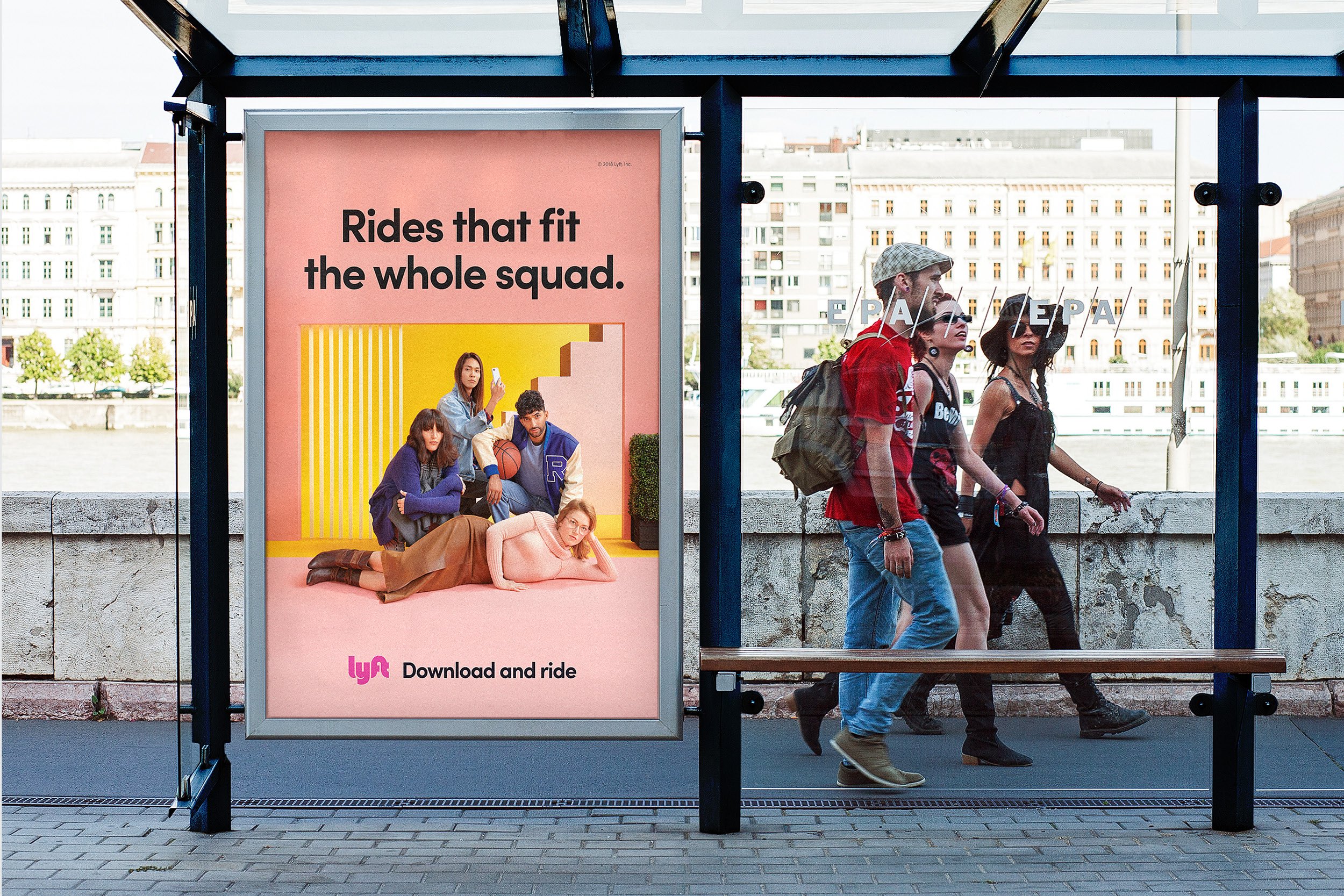
+ See our out-of-home campaign client showcases.
Chalk Art & Graffiti
Sidewalk art, chalk art, stenciling, clean graffiti and graffiti walls allow you to reach your audience in fun, surprising and unique ways that leave a lasting impression. Sidewalks offer a canvas for marketing your brand and promoting events in an artistic style that resonates with young adults.
Created by writing a message on a dirty sidewalk using pressured water and a stencil, clean graffiti has particular relevance for Millennials and Gen Z. This environmentally friendly form of outdoor media creates a buzz and positions your company as an innovative beacon of social responsibility.
+ See the top 3 things to know about campus advertising campaigns.
How does PR fit into the modern marketing picture?
The public image that you create and promote for your business is an important part of attracting consumer attention. When your reputation both reaches and speaks directly to your target audience, you will generate meaningful results. Unlike paid advertising, PR typically uses earned media coverage and promotional methods to generate publicity.
Organizations create messaging or generate news stories that attract the attention of media outlets and other influencers. In turn, these influencers share the content with their own audiences, amplifying the message, generating buzz and building your company’s brand.
Traditional PR campaigns sought out television, radio, newspaper, and/or magazine coverage. Today’s public relations efforts may also target website, blog and social media channels. The incursion of digital media outlets into the world of PR has blurred the lines between classic public relations and other types of marketing.
PR Tools
Public relations specialists utilize a wide variety of tools including:
- Press releases
- Speeches
- Pitching journalists
- Hosting or sponsoring special events
- Conducting market research
- Networking
- Online content creation
- Crisis communications
- Social media campaigns
PR Tactics
Media Coverage
Earning coverage through broadcast media (TV and radio) and print media (newspapers and magazines) continues to be a viable PR strategy. In addition, coverage on internet media sites and popular blogs reach both influencers and the general public.
Influencer Marketing
Influencer marketing has exploded with the growth of social media. Mentions and shares on sites like Twitter, YouTube, Facebook, Instagram, Tumblr, TikTok and Linked-In reach millions of viewers. Whether individuals share your content with their peers or high-profile influences speak favorably of your organization, you gain exposure, build positive brand awareness, and engage more of your target audience.
Examples of the types of influencers you will want to cultivate relationships with include bloggers, reporters, consumer advocates and industry experts. Once you’ve created connections with some key movers and shakers, maintain the association for continued coverage.
.jpg?width=2500&name=CaseStudies_Venus4%20(6).jpg)
+ See our influencer marketing campaign client showcase.
Promotional Events
Promotional events are an excellent way to reach consumers, particularly Millennials and members of Generation Z. As a rule, experiences have special value to members of these generations. Optimize attendance by promoting your event on social media and offering free food or other giveaways.
Create a workable integrated marketing strategy using the PESO framework.
Between the many digital marketing channels, traditional advertising options, and PR tactics, we’ve presented a prodigious number of approaches that could be included in a modern marketing campaign. It’s essential that you choose the tactics that are right for your business, rather than trying to do it all.
“Make sure the path you're on is the right path, or you're going to end up in the wrong place.”
- SCOTTIE SOMERS
The PESO model is a framework for integrating many types of marketing to create a successful integrated marketing strategy. To use this system, separate potential marketing tactics into four categories - paid media, earned media, shared media and owned media.
When choosing which avenues to include in your marketing strategy, first consider where and how your target audience spends their time. Where do they eat, work, study, relax? Will they notice advertisements placed in these locations? Which social media platforms do they use? Are they likely to engage with email marketing? Do they read the local newspaper or other publications? Do they watch network TV, cable TV, or use streaming services?
Next, think about the media channels you currently use for marketing purposes. How are they performing? Are there ways to optimize channels with low engagement or should these be dropped altogether? Are there tactics you’re not currently using that could amplify your existing efforts and improve outcomes? Keep your goals firmly in mind and choose approaches that will provide real and relevant results.
Time and money matter too. Pay attention to how much you will need to invest to reach your goals using the tactics you choose. Consider the expected time commitment as well, and be sure you have the available bandwidth to take the necessary action steps for success.
By incorporating the PESO framework into our DISCOVER. CREATE. EXECUTE. process, you will be able to develop an effective and efficient integrated marketing campaign that includes just the right mix of paid, earned, owned, and shared media.
Would you like to learn more about how to create an effective modern marketing campaign?
Here at MSS Media, , we’ve been providing Education, Government, Real Estate & Lifestyle clients with succinct, optimized, and successful marketing solutions for more than 15 years. Consider MSSmedia a full-service, one-stop shop for all your Media and Public Relations needs. Your goals are our motivation. And our mission is to propel your message, further and faster, to achieve the outcomes you’re looking for. If you found this blog post helpful, please share!
+ Search
+ BE IN THE KNOW
We deliver the latest media tips + insider marketing advice straight to your inbox.


